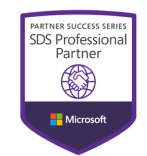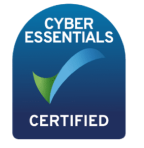

Authentic ITIL-4-Practitioner-Deployment-Management Exam Questions & Dumps ITIL-4-Practitioner-Deployment-Management PDF
Most candidates show their passion on our ITIL-4-Practitioner-Deployment-Management guide materials, because we guarantee all of the customers, if they unfortunately fail the ITIL-4-Practitioner-Deployment-Management exam, they will receive a full fund or a substitution such as another set of ITIL-4-Practitioner-Deployment-Management Study Materials of our company. We treat our customers in good faith and sincerely hope them succeed in getting what they want with our ITIL-4-Practitioner-Deployment-Management practice quiz.
The BraindumpsPrep ITIL 4 Practitioner: Deployment Management (ITIL-4-Practitioner-Deployment-Management) PDF dumps file work with all devices and operating system. You can easily install ITIL 4 Practitioner: Deployment Management (ITIL-4-Practitioner-Deployment-Management) exam questions file on your desktop computer, laptop, tabs, and smartphone devices and start ITIL 4 Practitioner: Deployment Management (ITIL-4-Practitioner-Deployment-Management) exam dumps preparation without wasting further time. Whereas the other two BraindumpsPrep Peoplecert ITIL-4-Practitioner-Deployment-Management Practice Test software is concerned, both are the mock ITIL 4 Practitioner: Deployment Management (ITIL-4-Practitioner-Deployment-Management) exam that will give you a real-time ITIL-4-Practitioner-Deployment-Management practice exam environment for preparation.
>> Authentic ITIL-4-Practitioner-Deployment-Management Exam Questions <<
Dumps ITIL-4-Practitioner-Deployment-Management PDF - ITIL-4-Practitioner-Deployment-Management Passed
If you have any problems installing and using ITIL-4-Practitioner-Deployment-Management study engine, you can contact our staff immediately. You know, we have so many users. If you do not immediately receive a link from us, you can send us an email to urge us. We hope you can use our ITIL-4-Practitioner-Deployment-Management Exam simulating as soon as possible! Our system is very smooth and you basically have no trouble. We hope you enjoy using our ITIL-4-Practitioner-Deployment-Management study engine.
Peoplecert ITIL-4-Practitioner-Deployment-Management Exam Syllabus Topics:
Topic
Details
Topic 1
Topic 2
Topic 3
Topic 4
Topic 5
Peoplecert ITIL 4 Practitioner: Deployment Management Sample Questions (Q14-Q19):
NEW QUESTION # 14
[Understand the Key Concepts of Deployment Management]
Which is a key feature of continuous deployment which is not found in other CI/CD stages?
Answer: C
Explanation:
Continuous deployment (CD) in ITIL 4 is the most advanced stage of the CI/CD pipeline, where every validated change is automatically deployed to production without manual intervention. The key feature unique to continuous deployment, not found in continuous integration or continuous delivery, is that it enables users to benefit immediately from changes (Option B), as changes reach production instantly after passing automated tests.
Option A (It automatically tests software code): Incorrect, as automated testing is a feature of continuous integration and continuous delivery, not unique to continuous deployment.
Option B (It enables users to benefit immediately from changes): Correct, as continuous deployment automatically pushes validated changes to production, delivering value to users without delay, unlike other CI/CD stages.
Option C (It predominantly uses staging environments): Incorrect, as continuous deployment minimizes reliance on staging environments, deploying directly to production.
Option D (It allows individual decisions about software releases): Incorrect, as continuous deployment eliminates manual release decisions, relying on automation for consistency.
NEW QUESTION # 15
[Use Tools and Techniques for Deployment]
Which automation tools should be used to transport and install configuration items into a test environment?
Answer: B
Explanation:
In ITIL 4, deployment tools are specifically designed to automate the transportation and installation of configuration items (CIs) into various environments, including test environments. These tools ensure consistency, repeatability, and efficiency in deployment processes, which are critical for managing CIs during testing phases.
Option A (Deployment tools): Correct, as deployment tools (e.g., Jenkins, Ansible, or Terraform for certain use cases) are tailored for automating the movement and installation of CIs, ensuring they are correctly placed in test environments with minimal manual intervention.
Option B (Environment configuration and management tools): While these tools (e.g., Puppet, Chef) manage environment settings, their primary focus is on configuring and maintaining environments, not transporting or installing CIs, making them less relevant here.
Option C (Work planning and prioritization tools): Tools like Jira or Trello focus on task management and prioritization, not on automating CI deployment, so this option is incorrect.
Option D (Service configuration management tools): These tools manage relationships and data about CIs in a configuration management database (CMDB), not the physical transport or installation of CIs, ruling out this option.
NEW QUESTION # 16
[Apply Deployment Management Processes]
What should be done if a newly developed deployment model cannot be tested for technical reasons?
Answer: D
Explanation:
When a newly developed deployment model cannot be tested due to technical limitations, ITIL 4 emphasizes a risk-based approach to deployment management to ensure stability and minimize disruption. Option C, closely monitoring the first few uses of the new model, aligns with ITIL 4's guidance to proceed cautiously when full testing is not feasible. This approach allows the organization to deploy the model in a controlled environment, observe its performance, and quickly address any issues, thereby reducing risk while gathering real-world data.
Option A (Only use the new model after a way to test it has been found): While testing is ideal, delaying deployment indefinitely until a testing method is found may not be practical, especially if business needs require timely deployment. This option is overly restrictive and does not balance risk with operational demands.
Option B (Carry out test deployments to see if the model works correctly): Conducting test deployments assumes testing is possible, which contradicts the question's premise that testing cannot be done for technical reasons. This makes the option invalid.
Option C (Closely monitor the first few uses of the new model): This is the most pragmatic approach, as it allows deployment with safeguards like monitoring to mitigate risks, aligning with ITIL's focus on value delivery and risk management.
Option D (Automate the activities of the new model before it is used): Automating an untested model could amplify risks, as automation without validation may propagate errors across environments.
NEW QUESTION # 17
[Integrate Deployment Management with Other Practices]
A large multi-national organization uses DevOps principles to enable fast and effective development and implementation of software products. Each product team has a lot of independence, but a centralized IT governance team ensures consistency and adherence to the organization's policies. Different people within the organization have different opinions about whether deployment management should be centralized or distributed among the teams. How should the deployment management practice be implemented and managed in this organization to ensure that the practice meets their needs?
Answer: D
Explanation:
In a DevOps environment with independent product teams and centralized governance, ITIL 4 recommends balancing autonomy with consistency. Option C, where a centralized deployment management team supports product teams by providing guidance and tooling, aligns with this approach. It ensures that teams retain flexibility to deploy efficiently while benefiting from standardized tools, best practices, and governance, maintaining organizational alignment and reducing risks of inconsistency.
Option A (Each development team should have an independent deployment manager who owns all aspects of deployment within that team): Incorrect, as fully independent deployment managers per team could lead to inconsistent practices and tools, undermining centralized governance and creating silos.
Option B (A centralized deployment management team should manage and coordinate deployments for all development teams): Incorrect, as centralizing all deployment activities reduces team autonomy, contradicting DevOps principles of empowering teams and slowing down delivery.
Option C (A centralized deployment management team should support the product teams by providing guidance and tooling): Correct, as it supports DevOps autonomy while ensuring consistency through shared tools (e.g., CI/CD pipelines) and guidance, aligning with ITIL 4's focus on value co-creation and governance.
Option D (Software developers in each team should take full responsibility for deployment of software that they develop): Incorrect, as while developers often handle deployments in DevOps, completely bypassing a structured deployment management practice risks non-compliance with governance and inconsistent outcomes.
NEW QUESTION # 18
[Measure and Improve Deployment Management]
An organization is aiming to achieve capability level 3 for the deployment management practice. What is an indication of the achievement of capability level 3?
Answer: D
Explanation:
ITIL 4 defines capability level 3 for a practice as achieving integration across the organization, where the practice is embedded into broader workflows and understood by related practices. For deployment management, an indication of reaching capability level 3 is when employees from other practices understand how deployment activities are integrated into relevant workflows (Option B). This demonstrates cross-functional alignment and maturity, showing that deployment management is not siloed but part of the organization's value streams.
Option A (The deployment management team regularly suggests and implements improvement opportunities): Incorrect, as continual improvement is characteristic of higher capability levels (e.g., level 4), not the defining feature of level 3.
Option B (Employees from other practices understand how deployment activities are integrated into relevant workflows): Correct, as level 3 focuses on integration and collaboration across practices, per ITIL 4's capability framework.
Option C (The deployment manager is able to report on the effectiveness of the deployment management practice): Incorrect, as reporting effectiveness is a general management task, not specific to level 3 maturity.
Option D (Deployment models are developed and implemented): Incorrect, as model development occurs at lower capability levels (e.g., level 1 or 2), not a hallmark of level 3.
NEW QUESTION # 19
......
According to the years of the test data analysis, we are very confident that almost all customers using our products passed the exam, and in o the ITIL-4-Practitioner-Deployment-Management study materials, with the help of their extremely easily passed the exam and obtained qualification certificate. We firmly believe that you can do it! Therefore, the choice of the ITIL-4-Practitioner-Deployment-Management Study Materials is to choose a guarantee, which can give you the opportunity to get a promotion and a raise in the future, even create conditions for your future life.
Dumps ITIL-4-Practitioner-Deployment-Management PDF: https://www.briandumpsprep.com/ITIL-4-Practitioner-Deployment-Management-prep-exam-braindumps.html




